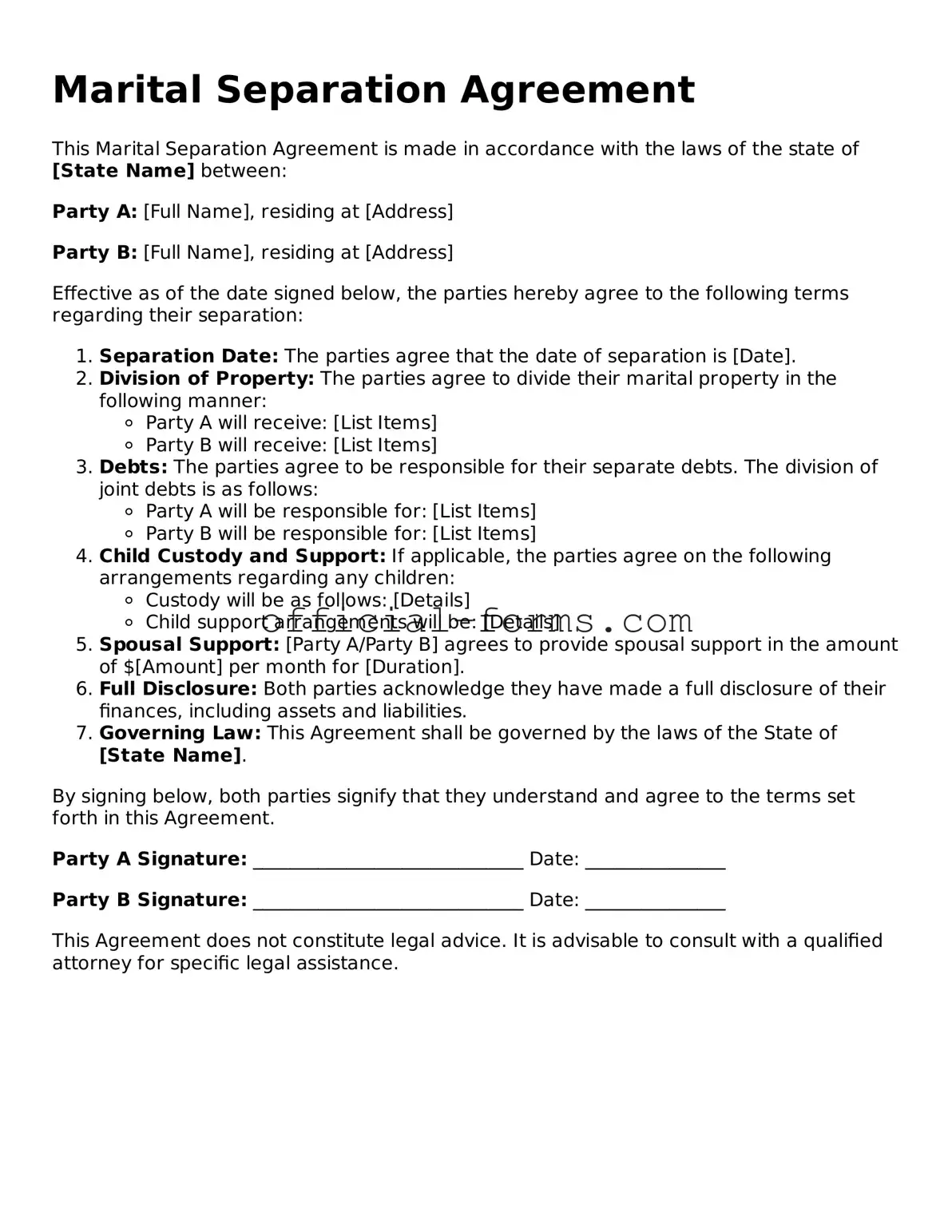Filling out a Marital Separation Agreement form can be a daunting task, and many individuals make common mistakes that can lead to complications down the road. One of the most frequent errors is failing to provide accurate personal information. This includes names, addresses, and dates of birth. Inaccuracies in this section can create confusion and may delay the processing of the agreement.
Another common mistake is neglecting to clearly define the terms of separation. Vague language can lead to misunderstandings between both parties. It is essential to specify details such as living arrangements, financial responsibilities, and custody arrangements if children are involved. Clarity helps prevent disputes later on.
Many people also overlook the importance of including all assets and debts in the agreement. Failing to list all property, bank accounts, and liabilities can result in one party being unfairly burdened with debts or missing out on shared assets. A comprehensive inventory ensures that both parties are aware of their financial standing.
Some individuals may rush through the process and forget to consider tax implications. Not addressing how taxes will be handled post-separation can lead to unexpected financial burdens. Understanding the tax consequences of asset division and alimony is crucial for long-term financial health.
Another mistake is not seeking legal advice. While it may be tempting to fill out the form without professional assistance, this can lead to significant errors. Consulting with a legal expert ensures that all aspects of the agreement comply with state laws and protects both parties' interests.
Additionally, people often forget to include a plan for future modifications. Life circumstances can change, and it is wise to outline how modifications to the agreement can be made in the future. This foresight can save time and conflict should changes become necessary.
Some individuals may also fail to consider the emotional aspects of separation. While the agreement is a legal document, it also represents a significant life change. Taking the time to communicate openly and empathetically can help both parties feel respected and understood.
Lastly, neglecting to have the agreement notarized can render it less enforceable. A notary public adds an extra layer of legitimacy to the document, ensuring that both parties are committed to the terms outlined. This step is often overlooked but is vital for the agreement's validity.
By being aware of these common mistakes, individuals can approach the Marital Separation Agreement form with greater confidence and clarity. Taking the time to carefully consider each aspect can lead to a smoother transition for both parties involved.
